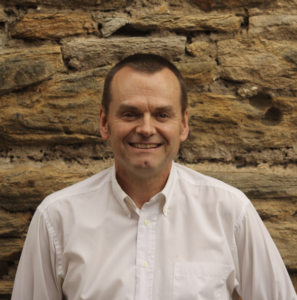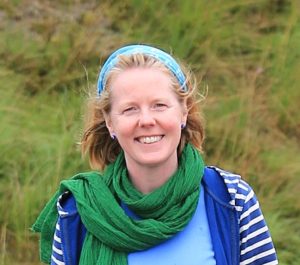2-14 December 2021
Course Description
Session 1 | Structural Complexity – Fractured basement reservoirs
Facilitator: Susie Daniels & Richard Jones
Date: Thursday 02 December
6:00pm – 8:00pm
Recognising the complexity of naturally fractured reservoirs is critical to successful development. In basement plays, there is inherent complexity because of the extreme porosity and permeability contrast between the fracture network and the crystalline host rock. This virtual field trip will visit outcrops in NW Scotland that highlight recent work, and will include the following themes:
- Crystalline basement lithologies, and typical fracture network geometries;
- The importance of scaling relationships in fracture systems;
- Additional porosity related to sand-filled fissures;
- Basement-cover relationships, and the significance of weathering profiles;
- Beyond hydrocarbon – basement plays for geothermal energy and CCUS.
Session 2 | Structural Complexity in the ‘Simply Folded Zone’ of the Zagros
Facilitator: Richard Jones
Date: Tuesday 07 December
6:00pm – 8:00pm
The Zagros is classic area of hydrocarbon exploration that is renowned for its large four-way closing anticlines that form ideal structural traps. Although the geometry of folding looks simple at a regional scale, at outcrop to license block scales there is a wealth of structural complexity that can have a marked impact on prospectivity. This trip will visit key outcrops that illustrate the following themes:
- Typical examples of structural complexity and heterogeneity at outcrop to anticline scales – and the implications for exploration;
- The influence of mechanical stratigraphy on the hydrocarbon system; and why it creates a ‘win-win-win’ in the Zagros;
- Why an understanding of regional tectonics is so important – and how geology seen in outcrop confirms what we see in the recent GPS and earthquake data.
Session 3 | Extensional and Salt Tectonics of Eastern Utah
Facilitator: John Howell
Date: Tuesday 09 December
6:00pm – 8:00pm
Eastern Utah contains spectacular examples of extensional and salt related tectonics. The goal of this virtual fieldtrip is to visit some of the classic examples around the town of Moab. The regional tectonics is dominated by a series of broadly parallel, N-S trending salt walls with well developed crestal collapse features, all of which well exposed. The trip will focus on the extensional tectonics associated with this crestal collapse
- Trace the Moab along its length and study how deformation style changes with displacement. The fault has a maximum displacement of 900 m and dies out over 10 km.
- Damage zone nature and dimensions in the Bartlett Fault, a splay of the Moab Fault.
- Fault interaction at Courthouse fault where two splays join
- Relay ramp geometry and architecture at the Delicate Arch relay zone
- Crestal collapse on the top of the Salt Valley Anticline
All work is based on the authors studies on collaboration with various colleagues and students over the past 20 years, especially Haakon Fossen and Atle Rotevatn of UiB. The trip will be based on virtual outcrops and delivered via LIME, a dedicated VFT software developed by the trip leader and colleagues from NORCE.
Session 4 | Natural Fracture Systems in Carbonate Reservoirs
Facilitator: Jo Garland
Date: Tuesday 14 December
6:00pm – 8:00pm
Approximately 85% of all carbonate-reservoired oil and gas fields worldwide are naturally fractured (Lamarche et al. 2012). Whilst tectonic mechanisms are responsible for many of these fractured reservoirs, one should not underestimate the impact of other processes that create fractures, and thus permeability, in carbonate rocks.
Fracture related dolomite bodies (often defined as hydrothermal dolomites) occur where hot, Mg-rich fluids move upwards through fractures, dolomitising the surrounding host carbonates. These “hot” dolomites can add additional matrix porosity, or reversely destroy porosity, to what would traditionally may be considered a tectonically-fractured reservoir.
Karst processes result in stratigraphically-controlled, heterogeneous fracture systems which have typically been dissolution-enhanced. The resulting fracture network includes not only fracture propagation into roof and wall rocks, but also commonly results in thick breccia systems formed through cave collapse.
Evaporite collapse breccias are formed where evaporites are dissolved, and the overlying continuous strata of carbonate rocks collapse, generating breccias composed of carbonate clasts. Fracture systems are inherent in the overlying, foundered, carbonates.
It is important to establish the mechanism responsible for creating fractures, since this will have a significant impact on the reservoir geometries and how the fractures are modelled. The only way to confidently unravel the complexity of fracture systems in carbonates is by careful diagenetic studies from core, and integrating well logs, seismic and analogues.
Speaker Biography - Richard Jones

Richard Jones has over 30 years of commercial geoscience experience, including several hundred days of geological fieldwork spanning five continents and including many areas of petroleum exploration worldwide. Commercial expertise includes applied structural analysis, fractured reservoir characterisation, and application of geospatial technologies in onshore and offshore sectors, particularly GIS, lidar laser-scanning, 3D visualisation and virtual fieldtrip technology. Following a PhD in structural geology & tectonics, current research includes modelling of fracture systems, fault and fold geometries and processes, and structural analysis in areas involving complex three-dimensional deformation. He is co-founder and Managing Director of Geospatial Research Ltd. since 2004.
Speaker Biography - Susie Daniels

Susan Daniels obtained her Ph.D. on strike-slip processes and responses at convergent margins from Liverpool University in 1998. She subsequently joined ExxonMobil as an exploration and production geoscientist. Susie has been a senior geologist at Geospatial Research Ltd. since 2007, where her current interests involve characterization of natural fracture parameters, regional tectonic syntheses, and geological aspects of carbon capture, utilisation and storage.
Speaker Biography - John Howell
John Howell is the Professor of Virtual Geoscience at the University of Aberdeen. His current research focuses on all aspects of virtual geosciences, including the improved use of analogues for understanding reservoirs. In the past 25 years he has worked on outcrops from all over the World with special focus on the western USA. He has supervised over 50 PhD students, published more than a 150 papers and edited 7 books. He currently runs the SAFARI project, a collaboration between University of Aberdeen and NORCE Research in Bergen supported by 14 companies. Over the past 15 years he has pioneered the use of Virtual Outcrops, collected using lidar and more recently UAVs (drones), in the geosciences. He is the co-founder of V3Geo.com a public virtual outcrop database and has numerous TV and other media appearances.
Speaker Biography - Jo Garland
Jo is a director and carbonate specialist at Cambridge Carbonates Ltd, where she works on reservoir characterisation studies, regional play evaluations and exploration projects for both the oil and gas and geothermal industries.
After completing her PhD on Devonian carbonates in late 1997, from 1998 to 2002, Jo was employed by Enterprise Oil, where she had several roles including geologist in the UK New Ventures Team; development geologist on the Jotun Field, Norway and Nelson Field, UK; operations geologist in UK North Sea and West of Ireland; and geologist in the International New Ventures Team. In 2002 Jo moved to Norway, where she worked as a carbonate specialist and activity leader in Statoil’s Carbonate Research Group – a role which involved developing and managing the research programme for exploration in carbonates at Statoil. In 2004, Jo moved back to the UK and joined Cambridge Carbonates as a carbonates specialist, and a couple of years later became a director in the company.
Jo has particular expertise in Tethyan carbonate reservoirs of the Middle East, Mediterranean and North Africa, late Palaeozoic carbonates and evaporites of NW Europe, Mesozoic reservoirs of Mexico, Cenozoic reservoirs of SE Asia, and seismic classification of carbonate reservoirs. Her passion ranges widely from working on a regional scale creating and refining palaeogeography maps, to complex reservoir characterisation and evaluation of reservoir quality in carbonates.
Affliations and Accreditation
BSc (First class honours): University of Liverpool
PhD: Durham University
Venue Information
This event will be delivered online.

